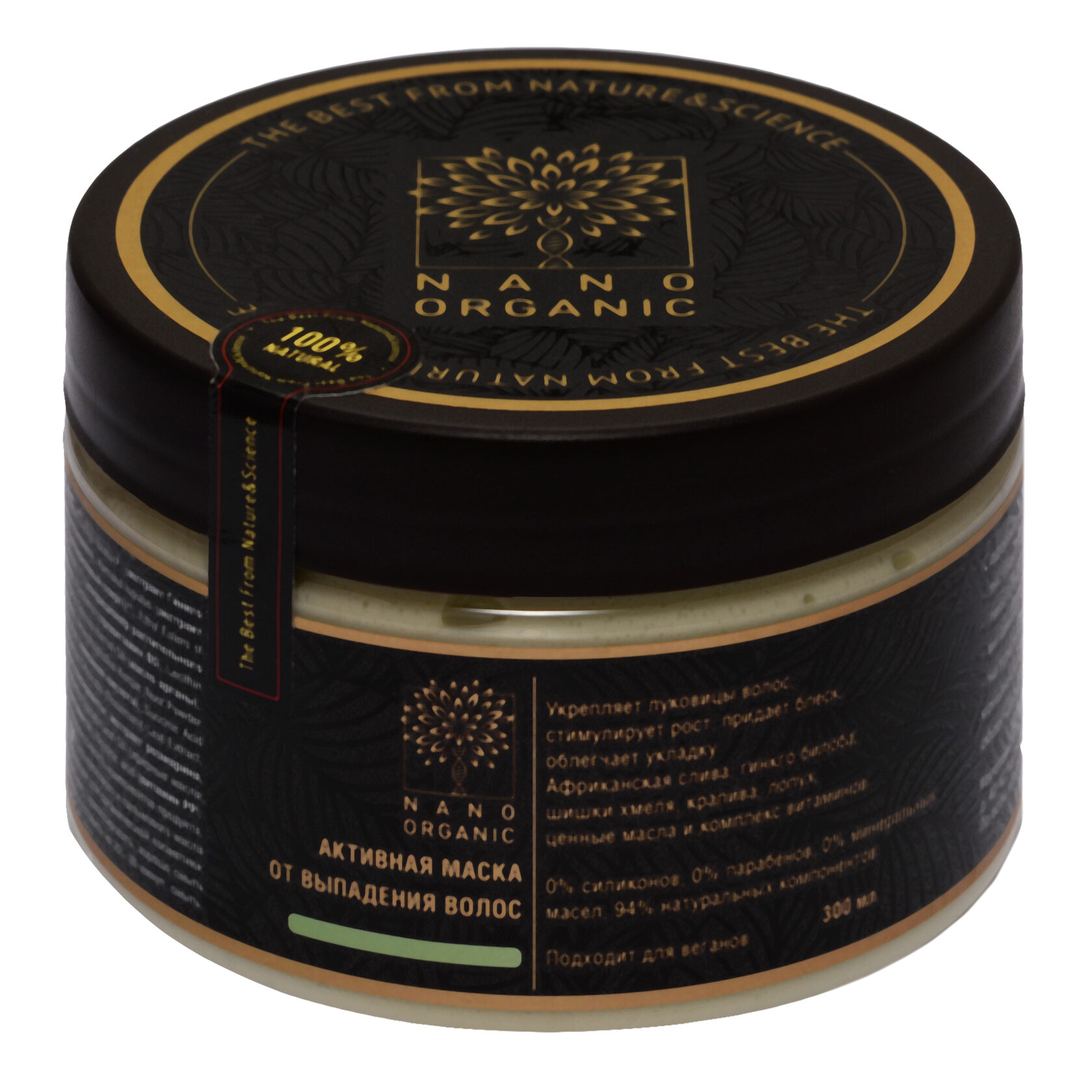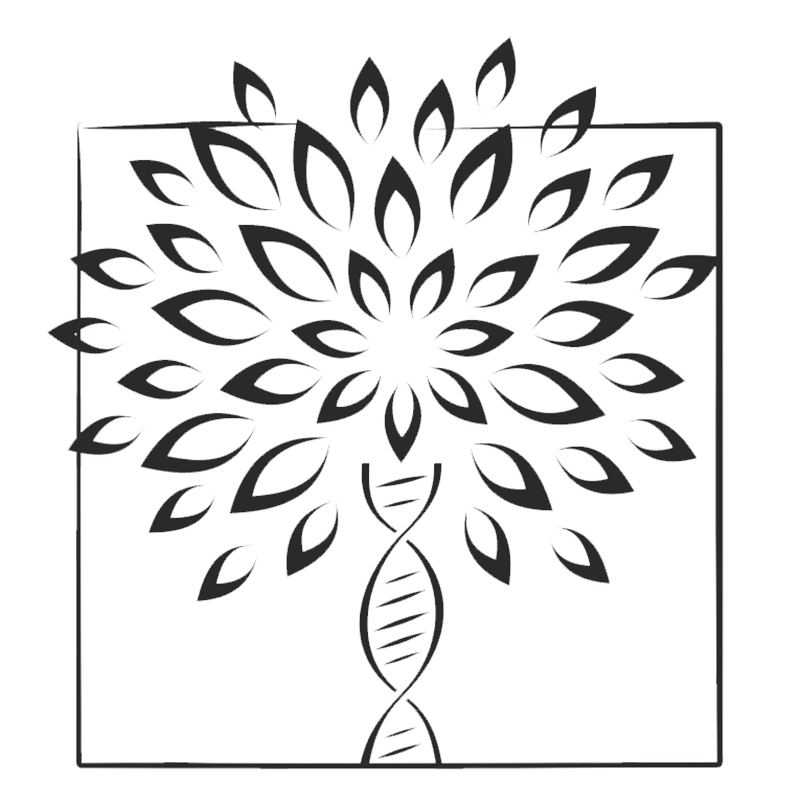
NanoOrganic
manager@naturcosmet.ru
+7 (915) 330-35-96
+7 (915) 330-35-96
Активная маска
Укрепляет луковицы волос, стимулирует рост, придает блеск, облегчает укладку
от выпадения волос

Африканская слива
борется со стрессовым выпадением волос.
Гинкго билоба, хмель, крапива и лопух
укрепляют волосяные луковицы.
Витамины A, B5, C, E, F, B3 и аргинин
стимулируют рост волос.
Комплекс витамина F (5%), и коньячной камеди
разглаживает волосы, придавая сияющий блеск и облегчая расчесывание.
Состав
manager@naturcosmet.ru
+7 (915) 330-35-96
+7 (915) 330-35-96
Состав
вода (Aqua); экстракт коры африканской сливы (Prunus Africana Bark Extract), экстракт гинкго билобы (Ginkgo Biloba Extract), экстракт крапивы (Urtica Dioica Extract), экстракт хвоща полевого (Equisetum Arvense Extract), экстракт шишек хмеля (Humulus Lupulus Extract), экстракт корня лопуха (Arctium Lappa Extract); цетеариловый спирт* (Cetearyl Alcohol); витамин F (Linoleic, Linolenic Acids); кондиционер растительного происхождения* (Distearoylethyl Dimonium Chloride, Cetearyl Alcohol); антистатик, кондиционер (Behentrimonium Chloride); провитамин B5 (Panthenol); лецитин (Lecithin); витамин B3 (Niacinamide); пребиотик (Sorbitol); масло арганы (Argania Spinosa Oil); аминокислота аргинин (Arginine); молочная кислота (Lactic Acid); коньячная камедь (Amorphophallus Konjac Root Powder); натуральный витамин E (Tocopherols Blend); лимонная кислота (Citric Acid); янтарная кислота (Succinic Acid); витамин C (L-ascorbic Acid); натуральные консерванты: экстракт розмарина, Nipaguard SCE* (Natural Preservatives: Rosmarinus Officinalis (Rosemary) Leaf Extract, Nipaguard SCE (Sorbitan Caprylate, Propanediol, Benzoic Acid)); эфирные масла: ромашки, полыни, мяты курчавой (Essential Oils: Chamomilla Recutita (Camomile), Artemisia Absinthum Herb, Mentha Spicata Leaf); витамин А (Retinol).
(*) разрешены европейскими системами экосертификации для органической косметики
(*) разрешены европейскими системами экосертификации для органической косметики
Разбор состава
Способ применения
Нанести маску на чистые влажные волосы, отступив от кожи головы на 1-3 см, как минимум, на 5 минут, помассировать, хорошо смыть водой. Для интенсивного восстановления обернуть пленкой и оставить на 20–30 минут, смыть.
Внимание: возможна индивидуальная непереносимость компонентов.
Внимание: возможна индивидуальная непереносимость компонентов.
Рекомендации
Наука
Исследования
Ниже можно посмотреть некоторые научные статьи, подтверждающие эффективность используемых активов. Слово "Источник" является активной ссылкой, перенаправляющей на первоисточник на платформе PubMed (общемировая платформа научных статей по медицине, биохимии, биологии) или других научных ресурсах.
Guiomar L. S. L. Evaluation of Humulus lupulus L. Therapeutic Properties for the Treatment of Skin Diseases: Determination of Antimicrobial, Cytotoxic, Anti-inflammatory and Antioxidant Potential of H. lupulus Extracts : дис. – Universidade da Beira Interior (Portugal), 2020.
Astray G. et al. Humulus lupulus L. as a natural source of functional biomolecules //Applied Sciences. – 2020. – Т. 10. – №. 15. – С. 5074.
Alonso-Esteban J. I. et al. Phenolic composition and antioxidant, antimicrobial and cytotoxic properties of hop (Humulus lupulus L.) Seeds //Industrial Crops and Products. – 2019. – Т. 134. – С. 154-159.
Moon J., Lee J. H., You S. Antioxidant Activity and Cytotoxicity on cell of Arctium lappa L. root extract //Journal of the Korean Applied Science and Technology. – 2017. – Т. 34. – №. 1. – С. 41-49.
Chan Y. S. et al. A review of the pharmacological effects of Arctium lappa (burdock) //Inflammopharmacology. – 2011. – Т. 19. – №. 5. – С. 245-254.
Sohn E. H. et al. Anti-allergic and anti-inflammatory effects of butanol extract from Arctium Lappa L //Clinical and molecular allergy. – 2011. – Т. 9. – №. 1. – С. 1-11.
Мурашкин Н. Н. и др. Инновации в терапии атопического дерматита, осложненного вторичной инфекцией //Педиатрическая фармакология. – 2018. – Т. 15. – №. 4.
Yang M., Zhou M., Song L. A review of fatty acids influencing skin condition //Journal of cosmetic dermatology. – 2020. – Т. 19. – №. 12. – С. 3199-3204.
Spagnol C. M. et al. Ascorbic acid in cosmetic formulations: Stability, in vitro release, and permeation using a rapid, inexpensive, and simple method //Journal of Dispersion Science and Technology. – 2017. – Т. 38. – №. 6. – С. 901-908.
Ravetti S. et al. Ascorbic acid in skin health //Cosmetics. – 2019. – Т. 6. – №. 4. – С. 58.
Ehrlich M. et al. Improvement in the Appearance of Wrinkles with Topical Transforming Growth Factor β1 and l‐Ascorbic Acid //Dermatologic surgery. – 2006. – Т. 32. – №. 5. – С. 618-625.
Trommer H. et al. Role of ascorbic acid in stratum corneum lipid models exposed to UV irradiation //Pharmaceutical research. – 2002. – Т. 19. – №. 7. – С. 982-990.
Kim S., Lee T. G. Stabilization of l-ascorbic acid in cosmetic emulsions //Journal of industrial and engineering chemistry. – 2018. – Т. 57. – С. 193-198.
Raschke T. et al. Topical activity of ascorbic acid: from in vitro optimization to in vivo efficacy //Skin pharmacology and physiology. – 2004. – Т. 17. – №. 4. – С. 200-206.
Stettler H. et al. A new topical panthenol-containing emollient: Results from two randomized controlled studies assessing its skin moisturization and barrier restoration potential, and the effect on skin microflora
Journal of Dermatological Treatment. – 2017. – Т. 28. – №. 2. – С. 173-180.
Journal of Dermatological Treatment. – 2017. – Т. 28. – №. 2. – С. 173-180.
Bissett D. L. Common cosmeceuticals
Clinics in dermatology. – 2009. – Т. 27. – №. 5. – С. 435-445.
Clinics in dermatology. – 2009. – Т. 27. – №. 5. – С. 435-445.
Pavlačková J. et al. In vivo efficacy and properties of semisolid formulations containing panthenol
Journal of cosmetic dermatology. – 2019. – Т. 18. – №. 1. – С. 346-354.
Journal of cosmetic dermatology. – 2019. – Т. 18. – №. 1. – С. 346-354.
Yoshioka A. et al. Anti-oxidant effects of retinoids on inflammatory skin diseases //Archives of dermatological research. – 1986. – Т. 278. – №. 3. – С. 177-183.
Zasada M., Budzisz E. Retinoids: Active molecules influencing skin structure formation in cosmetic and dermatological treatments //Advances in Dermatology and Allergology/Postȩpy Dermatologii i Alergologii. – 2019. – Т. 36. – №. 4. – С. 392.
Słoczyńska K. et al. Skin metabolism established with the use of MetaSite for selected retinoids employed in topical and systemic treatment of various skin disorders and found in cosmeceuticals //Acta Biochimica Polonica. – 2015. – Т. 62. – №. 2.
Ramos-e-Silva M. et al. Anti-aging cosmetics: Facts and controversies //Clinics in dermatology. – 2013. – Т. 31. – №. 6. – С. 750-758.
Packer L., Valacchi G. Antioxidants and the response of skin to oxidative stress: vitamin E as a key indicator //Skin Pharmacology and Physiology. – 2002. – Т. 15. – №. 5. – С. 282-290.
Nachbar F., Korting H. C. The role of vitamin E in normal and damaged skin //Journal of Molecular Medicine. – 1995. – Т. 73. – №. 1. – С. 7-17.
Thiele J. J., Ekanayake-Mudiyanselage S. Vitamin E in human skin: organ-specific physiology and considerations for its use in dermatology //Molecular aspects of medicine. – 2007. – Т. 28. – №. 5-6. – С. 646-667.
Pekmezci E., Dündar C., Türkoğlu M. A proprietary herbal extract against hair loss in androgenetic alopecia and telogen effluvium: a placebo-controlled, single-blind, clinical-instrumental study //Acta Dermatovenerol Alp Pannonica Adriat. – 2018. – Т. 27. – №. 2. – С. 51-57.
Lourith N., Kanlayavattanakul M. Hair loss and herbs for treatment //Journal of cosmetic dermatology. – 2013. – Т. 12. – №. 3. – С. 210-222.
Di Virgilio N. et al. The potential of stinging nettle (Urtica dioica L.) as a crop with multiple uses //Industrial Crops and Products. – 2015. – Т. 68. – С. 42-49.
Dal Belo S. E. et al. Skin penetration of epigallocatechin-3-gallate and quercetin from green tea and Ginkgo biloba extracts vehiculated in cosmetic formulations //Skin pharmacology and physiology. – 2009. – Т. 22. – №. 6. – С. 299-304.
Femenia A. High-value co-products from plant foods: cosmetics and pharmaceuticals //Handbook of waste management and co-product recovery in food processing. – Woodhead Publishing, 2007. – С. 470-501.
